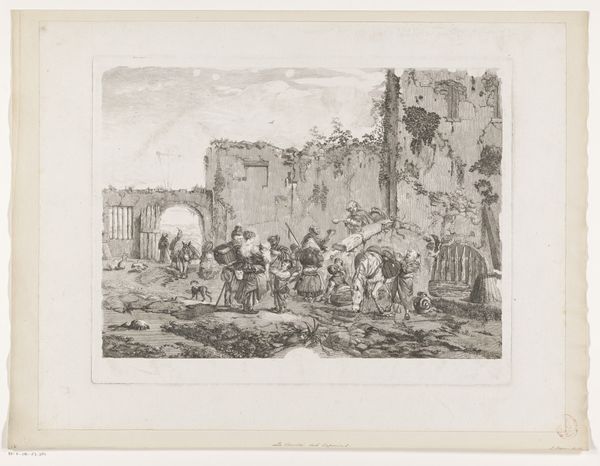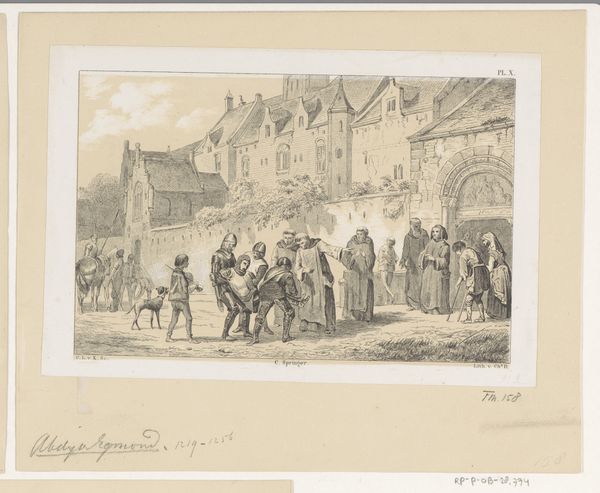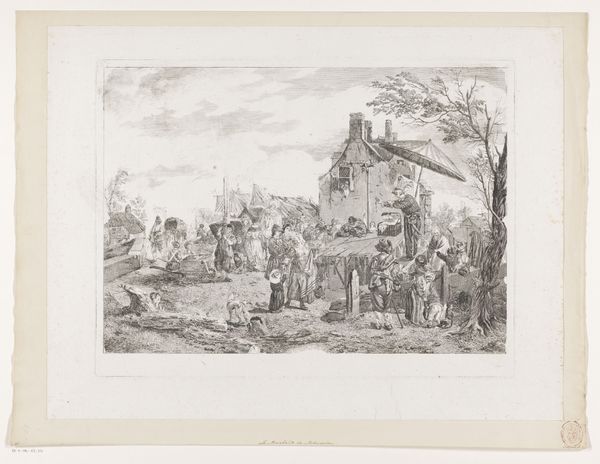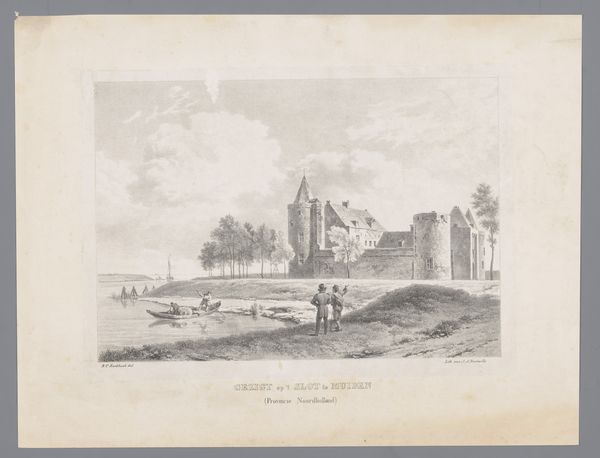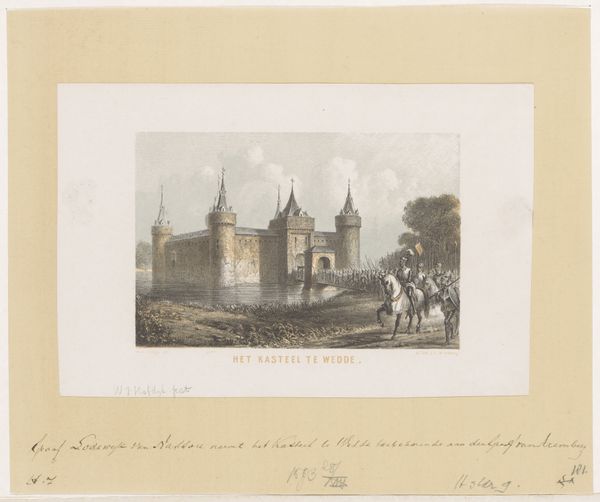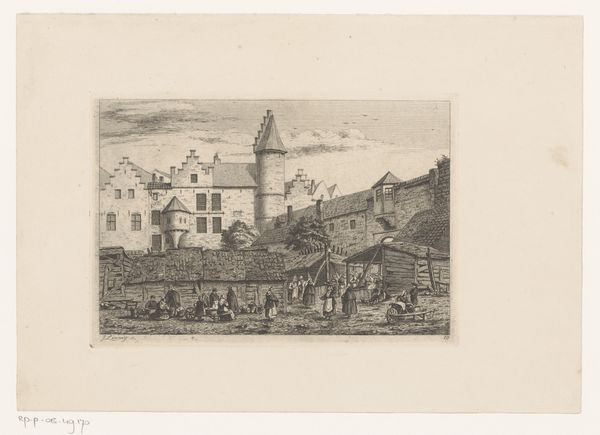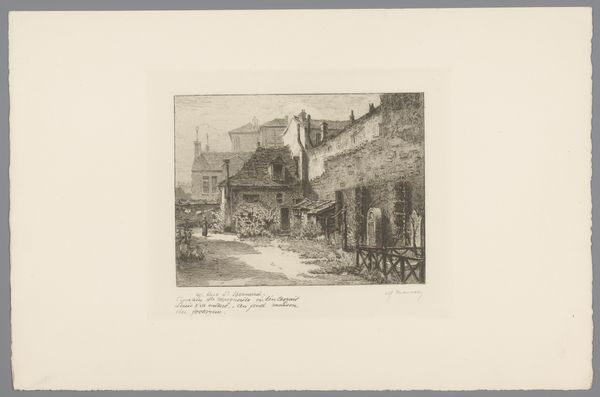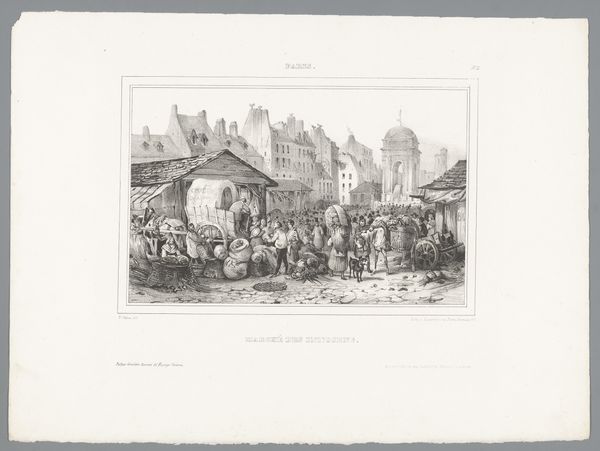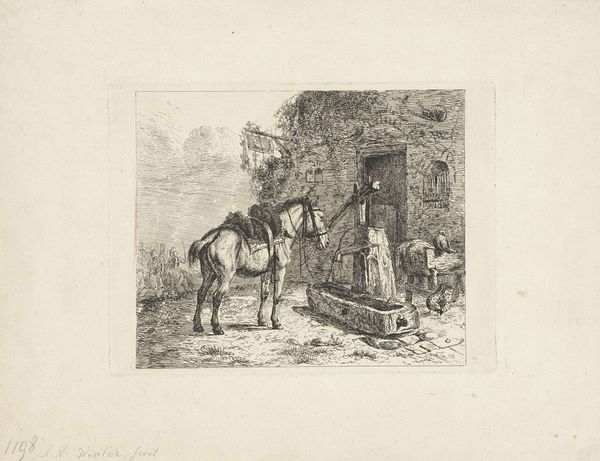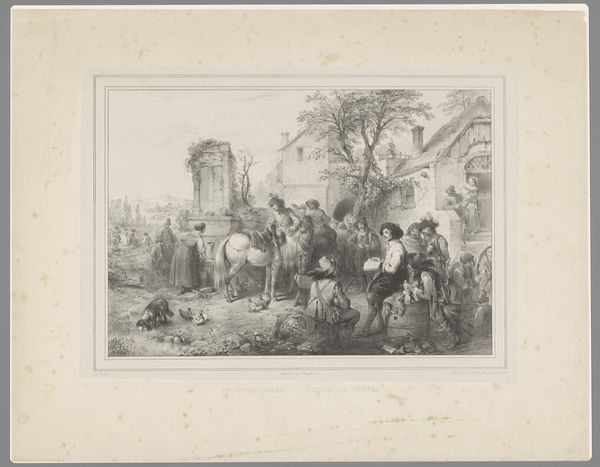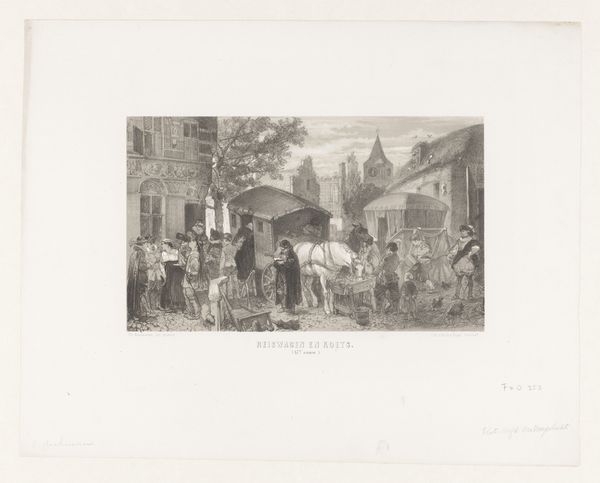
drawing, print, etching
#
drawing
#
medieval
# print
#
etching
#
pencil sketch
#
landscape
#
etching
#
traditional art medium
#
watercolour illustration
#
history-painting
Dimensions: height 165 mm, width 234 mm
Copyright: Rijks Museum: Open Domain
Editor: This print, "A Medieval Castle, 11th Century," etched by Christiaan Lodewijk van Kesteren between 1853 and 1861, captures a bustling medieval scene. I'm struck by how the artist reconstructs a sense of history here. What aspects of its historical context stand out to you? Curator: Well, it’s important to consider the 19th-century fascination with the medieval era, and how that era was depicted. Notice how the scene feels somewhat romanticized, the figures neatly arranged. Do you think it represents the realities of 11th-century life? Or is it telling us more about 19th century sensibilities? Editor: It does seem idealized. Perhaps it catered to a public interested in a sanitized, picturesque version of the past? How might the Rijksmuseum, where this is housed, play into this interpretation? Curator: Precisely. Museums are never neutral spaces. The Rijksmuseum, established to showcase Dutch art and history, naturally shaped which narratives were promoted. This piece, by depicting a specific historical moment, participates in constructing a national identity, even if it does so through a somewhat rose-tinted lens. Consider also the rise of history painting during this period; did this contribute to an understanding of history or merely play into nationalistic fervor? Editor: That makes me think about how illustrations like this in popular books might have influenced public perceptions, creating almost a collective historical memory. Curator: Exactly! Images have the power to shape public opinion and solidify narratives. Even seemingly innocuous scenes like this one have a role in a larger cultural dialogue. What's interesting to you about this, thinking about the way you were first engaging with it? Editor: I see how this image isn't just about the 11th century, but really a product of the 19th century and its own social and political agenda, mediated by the museum today. Thanks, that's a richer understanding than I had initially! Curator: Indeed, context shapes perception. It shows how art engages in dialogues across centuries.
Comments
No comments
Be the first to comment and join the conversation on the ultimate creative platform.
